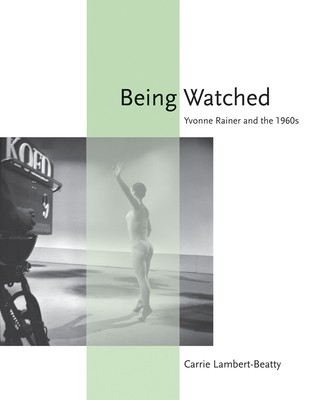
- We will send in 10–14 business days.
- Author: Carrie Lambert-Beatty
- Publisher: MIT Press
- ISBN-10: 0262516071
- ISBN-13: 9780262516075
- Format: 17.5 x 22 x 2 cm, softcover
- Language: English
- SAVE -10% with code: EXTRA
Reviews
Description
How Yvonne Rainer's art shaped new ways of watching as well as performing; how it connected 1960s avant-garde art to politics and activism.In her dance and performances of the 1960s, Yvonne Rainer famously transformed the performing body--stripped it of special techniques and star status, traded its costumes and leotards for T-shirts and sneakers, asked it to haul mattresses or recite texts rather than leap or spin. Without discounting these innovations, Carrie Lambert-Beatty argues in Being Watched that the crucial site of Rainer's interventions in the 1960s was less the body of the performer than the eye of the viewer--or rather, the body as offered to the eye. Rainer's art, Lambert-Beatty writes, is structured by a peculiar tension between the body and its display. Through close readings of Rainer's works of the 1960s--from the often-discussed dance Trio A to lesser-known Vietnam war-era protest dances--Lambert-Beatty explores how these performances embodied what Rainer called "the seeing difficulty." (As Rainer said: "Dance is hard to see.") Viewed from this perspective, Rainer's work becomes a bridge between key episodes in postwar art. Lambert-Beatty shows how Rainer's art (and related performance work in Happenings, Fluxus, and Judson Dance Theater) connects with the transformation of the subject-object relation in minimalism and with emerging feminist discourse on the political implications of the objectifying gaze. In a spectacle-soaked era, moreover--when images of war played nightly on the television news--Rainer's work engaged the habits of viewing formed in mass-media America, linking avant-garde art and the wider culture of the 1960s. Rainer is significant, argues Lambert-Beatty, not only as a choreographer, but as a sculptor of spectatorship.
EXTRA 10 % discount with code: EXTRA
The promotion ends in 20d.06:14:27
The discount code is valid when purchasing from 10 €. Discounts do not stack.
- Author: Carrie Lambert-Beatty
- Publisher: MIT Press
- ISBN-10: 0262516071
- ISBN-13: 9780262516075
- Format: 17.5 x 22 x 2 cm, softcover
- Language: English English
In her dance and performances of the 1960s, Yvonne Rainer famously transformed the performing body--stripped it of special techniques and star status, traded its costumes and leotards for T-shirts and sneakers, asked it to haul mattresses or recite texts rather than leap or spin. Without discounting these innovations, Carrie Lambert-Beatty argues in Being Watched that the crucial site of Rainer's interventions in the 1960s was less the body of the performer than the eye of the viewer--or rather, the body as offered to the eye. Rainer's art, Lambert-Beatty writes, is structured by a peculiar tension between the body and its display. Through close readings of Rainer's works of the 1960s--from the often-discussed dance Trio A to lesser-known Vietnam war-era protest dances--Lambert-Beatty explores how these performances embodied what Rainer called "the seeing difficulty." (As Rainer said: "Dance is hard to see.") Viewed from this perspective, Rainer's work becomes a bridge between key episodes in postwar art. Lambert-Beatty shows how Rainer's art (and related performance work in Happenings, Fluxus, and Judson Dance Theater) connects with the transformation of the subject-object relation in minimalism and with emerging feminist discourse on the political implications of the objectifying gaze. In a spectacle-soaked era, moreover--when images of war played nightly on the television news--Rainer's work engaged the habits of viewing formed in mass-media America, linking avant-garde art and the wider culture of the 1960s. Rainer is significant, argues Lambert-Beatty, not only as a choreographer, but as a sculptor of spectatorship.


Reviews